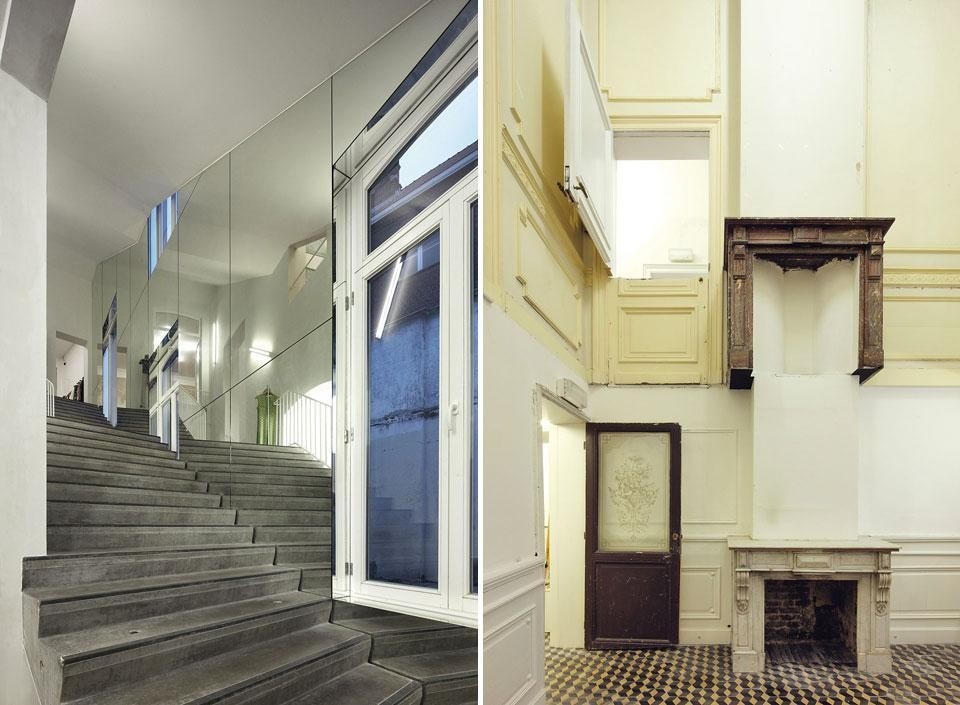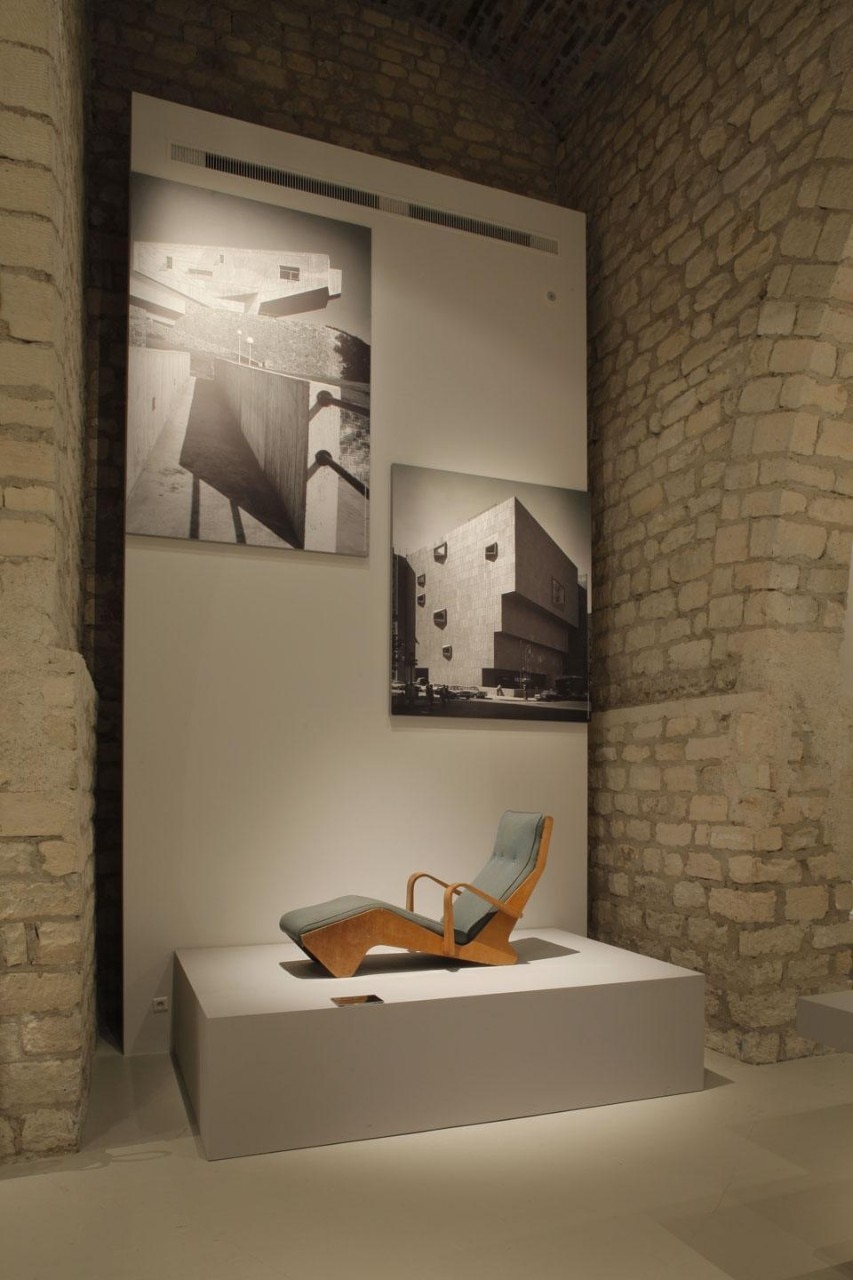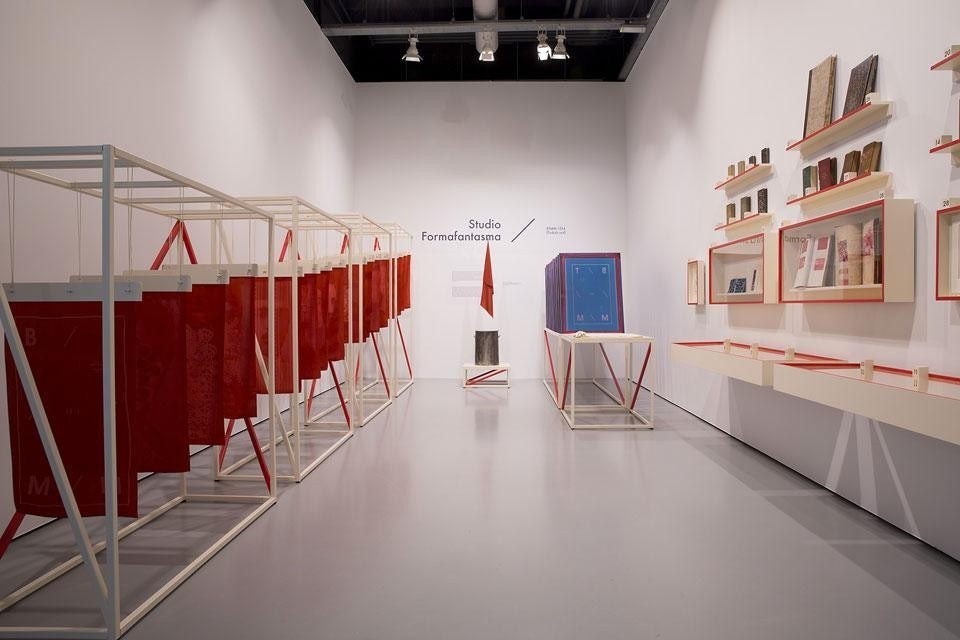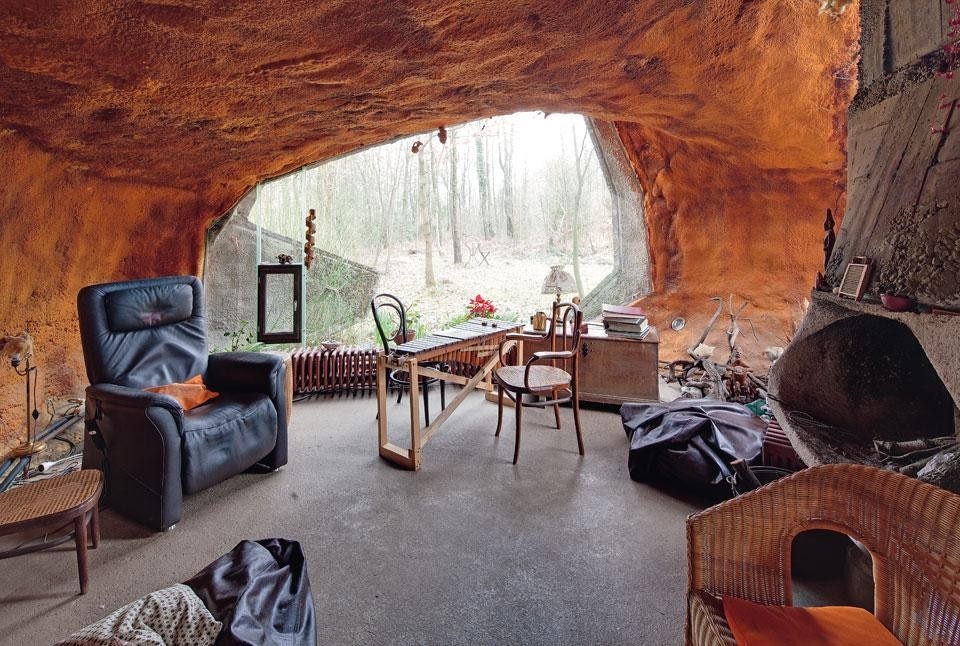Domus visits a vital and unknown masterpiece of Belgian modernism, immersed in vegetation in the wilderness surrounding Liège: one of the few realized works of Jacques Gillet's organic architecture. Finally, young London and Athens-based design studio Studiolav created a two-piece set of kitchen wooden stamps emulating fabric patterns, rethinking the traditional notion of Greek folklore by using olive wood.
Inhabited sculpture
An architecture report from Liège by Adam Štech
The use of raw concrete and formal expressiveness are directly linked with the Sculpture House project, begun in 1962 by architect Jacques Gillet, whose constructive principle and idea of intuitive creation challenge the aesthetics of postwar modernism and instead return to the ancient roots of human existence, nature and organic architecture. Gillet, born in Liège in 1931, completed his architectural studies in 1956 at the Académie des Beaux-Arts and began to explore novel forms of construction in concrete, culminating in the experimental form of the Sculpture House. In an earlier project, Gillet was asked by engineer Jean-Marie Huberty to collaborate on the "aesthetic impression" of Huberty's own house in La Hulpe, near Brussels. Here, Gillet encountered the unexpected possibilities of concrete; for example, the roof was designed with Huberty and fellow civil engineer André Paduart as a shell of two parabolic hyperboloids, only five centimetres thick.
[Read the full article]

An architecture report by Angelique Campens
The firm A DVVT is composed of Jan De Vylder, Inge Vinck and Jo Taillieu, who all studied at Sint-Lucas in Ghent. Theirs is an architecture that begins in the milieu of everyday existence. Unlike many other architectural styles of today, they go back to the basics of the craft of architecture: they love to build, and this pleasure manifests itself in their actual constructions. Their projects offer a counterbalance to the often rigid and cold structures that are built everywhere these days. Intuitiveness, straightforwardness, playfulness and coincidences are central to their work. They have erected all kinds of buildings throughout Flanders, ranging from large projects — such as rehearsal rooms for the dance-theatre collective Les Ballets C de la B (see Domus 928, 2009), the lod opera production house and the offices of the Toneelhuis theatre company — to smaller schemes and many renovations that are of equal importance to the human scale of architecture.
[Read the full article]

A news report from Kyoto
With Marcel Breuer: Design & Architecture, Paris' Cité de l'architecture & du patrimoine inaugurates a new collaboration with the Vitra Design Museum, known for their monographic traveling exhibitions on the masters of the Modern Movement: Gerrit Rietveld, Rudolf Steiner, Ray and Charles Eames, Georges Nelson, and, of course, Le Corbusier. After Germany, Austria, Hungary, Spain, Italy, Belgium, the UK, and the USA, Vitra's presentation of one of the most influential and important designers of the 20th century, Marcel Breuer, stops in the ville lumière, where it will remain until July 2013. Breuer's seminal contribution to the modern movement was the design of the Wassily tubular steel chair (or the Model B3 chair), which he produced when he was only 23 and the head of the cabinet-making workshop at the Bauhaus in Dessau.
[Read the full article]

A news report from Tilburg
At the Tilburg TextileMuseum, in the south of The Netherlands, Studio Formafantasma's Andrea Trimarchi and Simone Farresin present the results of their most recent research project, a collection of 17 silk textiles entitled BTMM1514 (Turkish Red). The project is on display as part of the Turkish Red & More exhibition, curated by Caroline Boot with exhibition design by Formafantasma, alongside projects by BCXSY, Minale-Maeda, Merel Boers and Lenneke Langenhuijsen. Formafantasma's project BTMM1514 (Turkish Red) was inspired by the TextileMuseum's historical collection. Trimarchi and Farresin were drawn to the Driessen collection, composed of a large series of textile-related books, notebooks, material samples and printing experimentations collected by various generations of Driessen's family members and colourists working for the family's cotton printing company.
[Read the full article]
-HR1.jpg.foto.rmedium.jpg)
A news report from Athens
Young London and Athens-based design studio Studiolav has created Designer Baking, a two-piece set of kitchen wooden stamps, which emulate Pied de Poule and Tweed Herringbone fabric patterns. The piece aims to transform "your bread, cookies and pies into small haute couture baking marvels," state Studiolav's Loukas Angelou and Vasso Asfi. The stamps, made of solid olive wood, were designed as part of an initiative by Athens-based Skoufa Gallery, which invited designers to create and develop a contemporary version of folklore, using olive wood as the main material.
[Read the full article]


